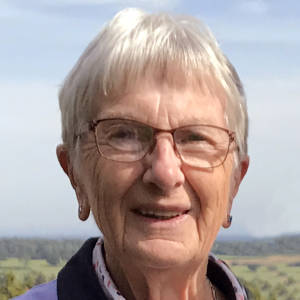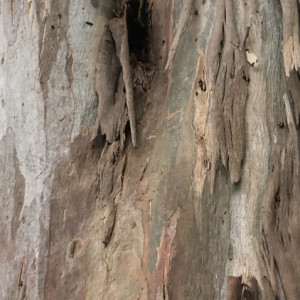X marks the bee spot
This gum tree outside out back fence is home to a colony of Australian native bees. They live in a small cavity about three metres above the ground, and they have been there ever since we moved in, eight years ago.
I have tried a few times to photograph the nest, without success. I need more skills or a better camera, probably both. Today I was listening to a podcast about European honey bees and their amazing social organisation, and that prompted me to check on our bees. As it happened, a falling piece of bark had formed an ‘X marks the spot’ pointer to the nest. You can just see the cavity and some bees flying in and out in the extra, if you squint.
Dr Google tells me that Australia has some 2,000 species of native bees. Some are solitary and make individual nests, others, like ours, are social and live in groups. They range in size from the tiny Quasihesma (2mm) to the giant Carpenter Bee (24mm). They come in many shapes and colours, including blue banded bees and the furry teddybear bees. They are great pollinators, but unlike the European imports they don’t make much honey. One group is stingless, and they do make a little honey, the much prized sugarbag honey.
What I would really like to know, and I haven’t found anyone to tell me, is what goes on in that nest. They aren’t making honeycomb in there, but what are they doing, and how are they organised? Do they have a queen and drones? I will need to do more research.


Comments
Sign in or get an account to comment.


